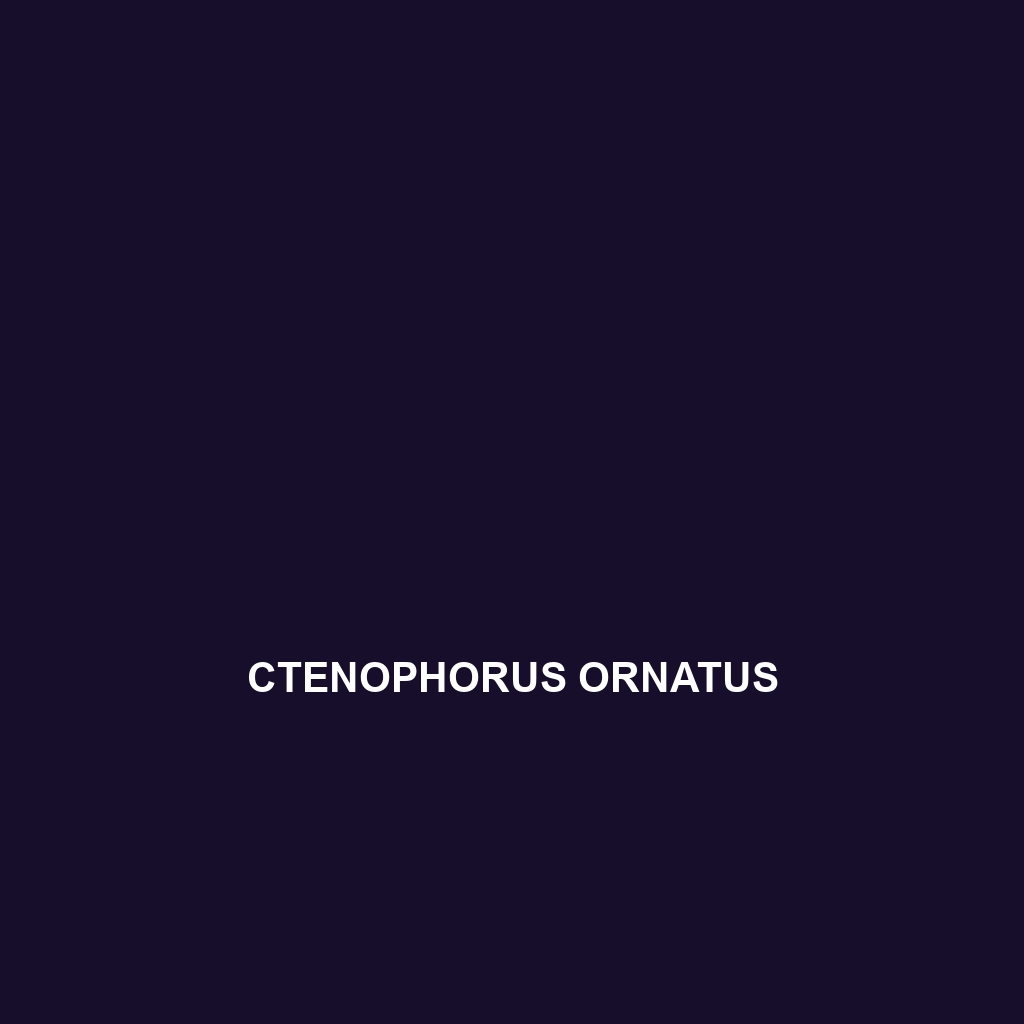Common Name: Ctenophorus ornatus
Scientific Name: Ctenophorus ornatus
Habitat:
Ctenophorus ornatus, commonly known as the Ornate Dragon, is primarily found in the arid regions of Australia. This fascinating lizard inhabits sandy woodlands, grasslands, and scrubby areas, displaying a preference for habitats with adequate ground cover and sunny open areas. The species is endemic to various regions, particularly in the southeastern part of Australia, including Victoria and New South Wales.
Physical Characteristics:
Measuring approximately 10 to 12 centimeters in length, Ctenophorus ornatus exhibits a vivid coloration, often characterized by a striking pattern of vibrant greens, yellows, and browns that help it blend into its native environment. The Ornate Dragon possesses distinctive features such as a flattened body, elongated limbs, and a broad head, making it easily identifiable among other lizard species. Its throat often displays bright hues, especially during mating displays.
Behavior:
This species is known for its territorial behavior, where males engage in elaborate displays, including head bobbing and push-ups, to assert dominance and attract females during the mating season. Ctenophorus ornatus is diurnal, primarily active during daylight hours. It is also an adept climber, often seen basking on rocks or low branches, using its keen eyesight to watch for potential predators and prey.
Diet:
Ctenophorus ornatus is an insectivorous lizard, primarily feeding on a variety of small invertebrates. Common food sources include ants, beetles, and grasshoppers, showcasing its role as a crucial player in controlling insect populations within its habitat. Its foraging habits reveal a keen adaptability, as it can often be spotted hunting on the ground or among vegetation.
Reproduction:
The breeding season for Ctenophorus ornatus typically occurs in the warmer months from spring to early summer. Males engage in courtship rituals, displaying vibrant throat colors to attract females. After successful mating, females lay clutches of eggs, usually ranging from 3 to 8, which are buried in sandy substrates. The eggs incubate for several weeks before hatching, and the young lizards emerge fully formed and ready to fend for themselves.
Conservation Status:
As of the latest assessments, Ctenophorus ornatus is currently classified as Least Concern on the IUCN Red List. However, habitat destruction due to urbanization and land development poses potential threats to its population. Conservation efforts are crucial to ensure the sustainability of its habitats.
Interesting Facts:
Ctenophorus ornatus is often admired by reptile enthusiasts for its striking appearance and vibrant colors. It can also exhibit a fascinating behavior known as “sallies,” where it performs short leaps while foraging, allowing for effective hunting and evasion from predators.
Role in Ecosystem:
As an insectivore, Ctenophorus ornatus plays an essential role in maintaining the ecological balance of its environment, regulating insect populations while serving as prey for various predators, including birds and larger reptiles. This species contributes to the biodiversity of the ecosystems it inhabits, highlighting its importance in the food web.
